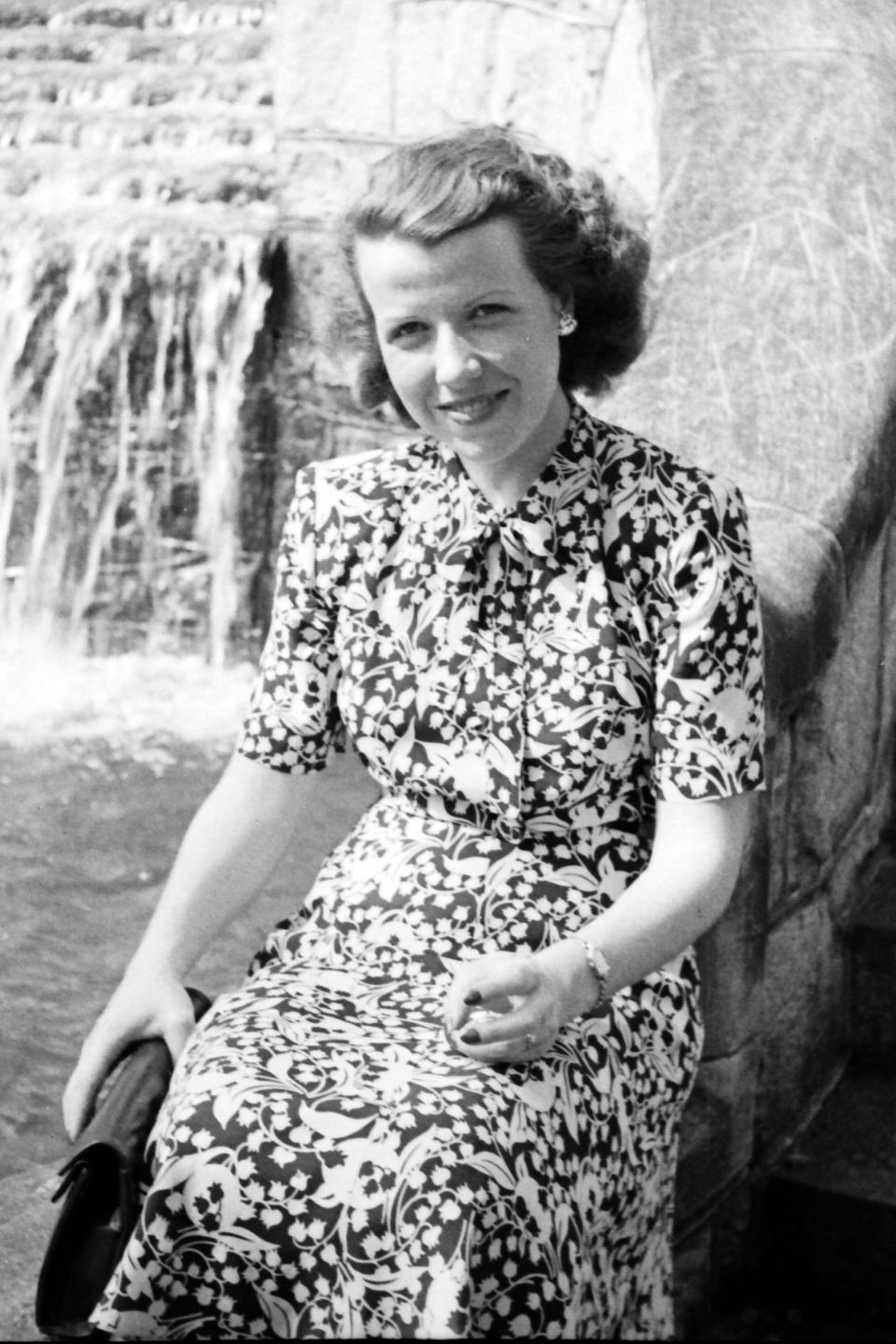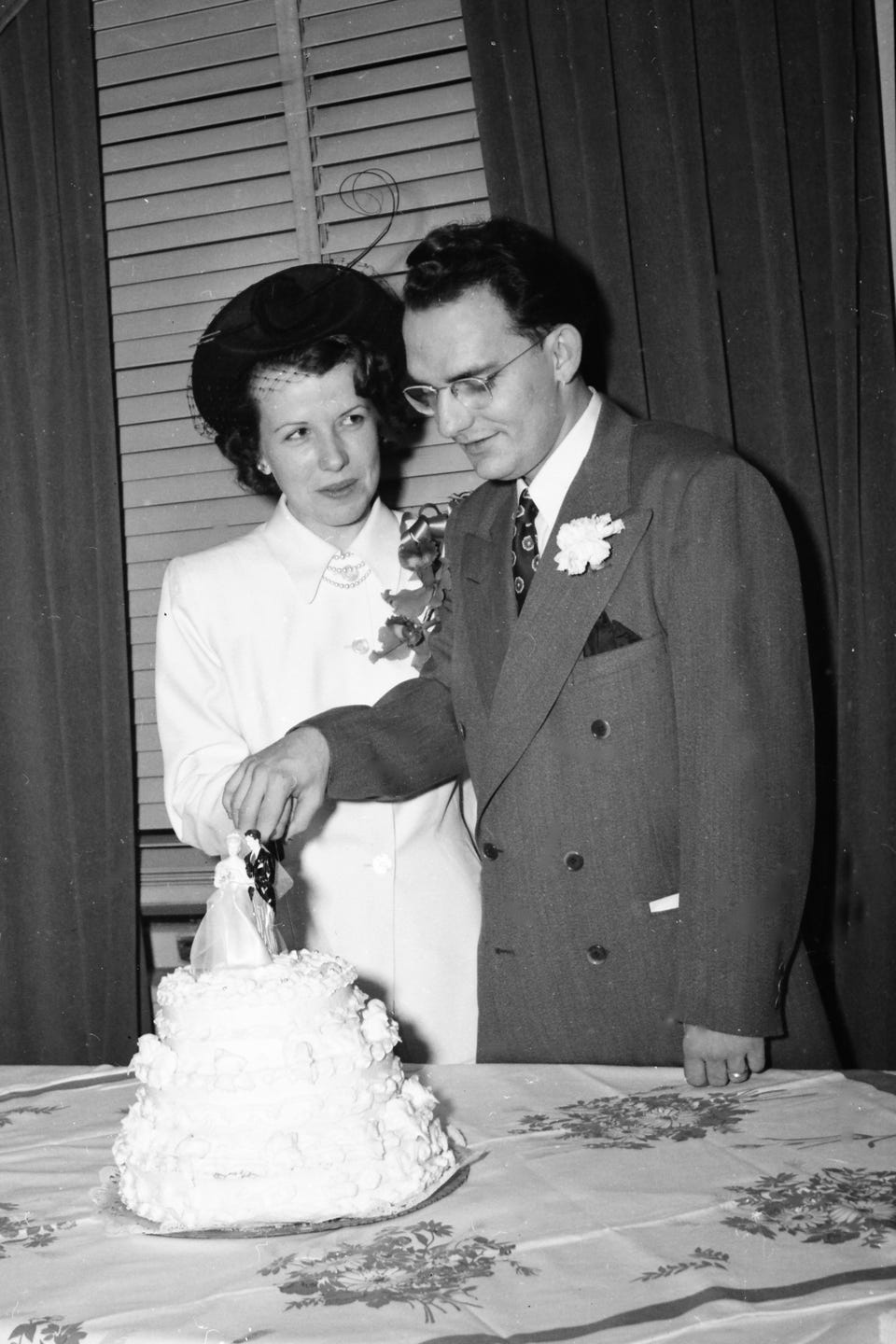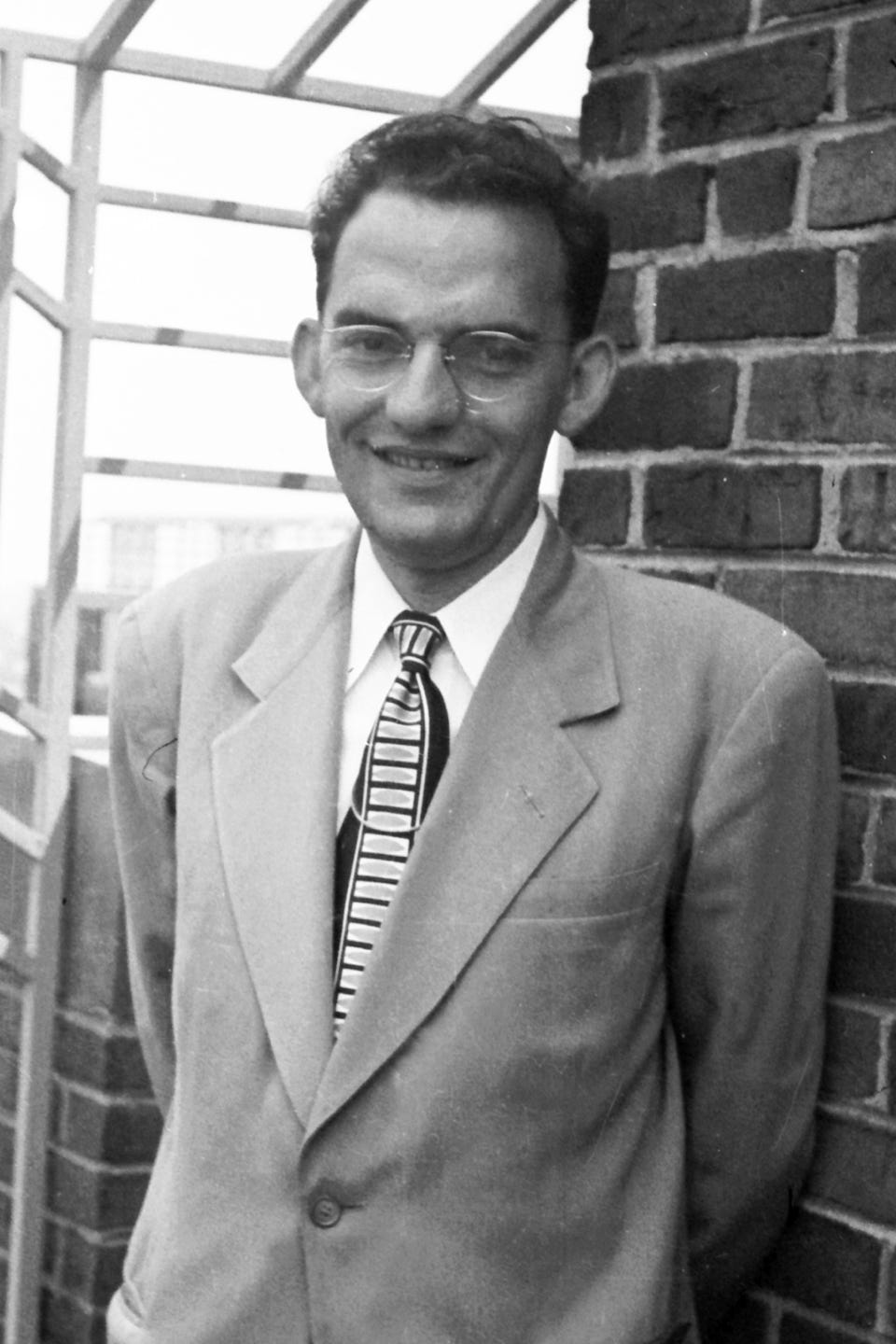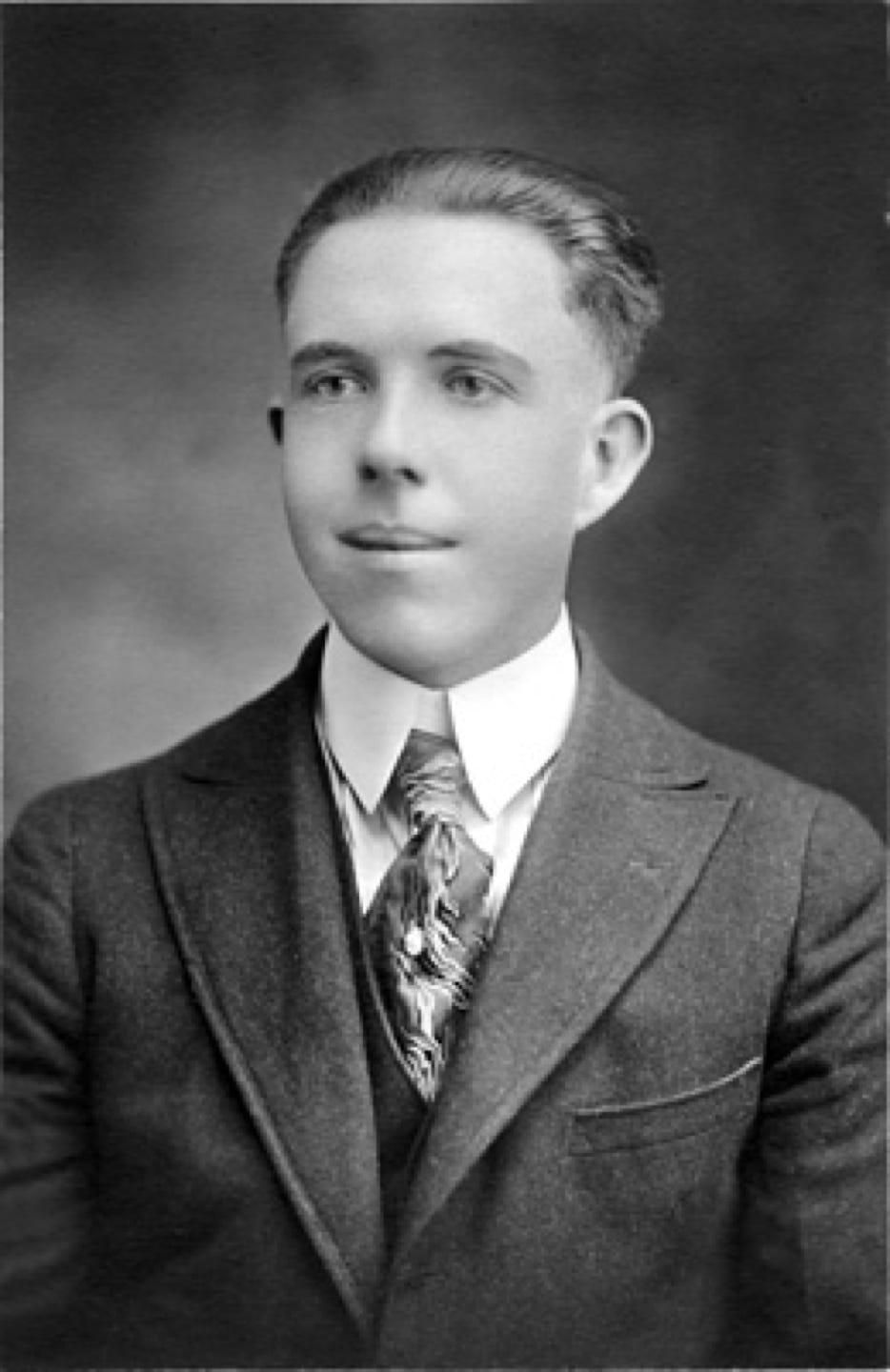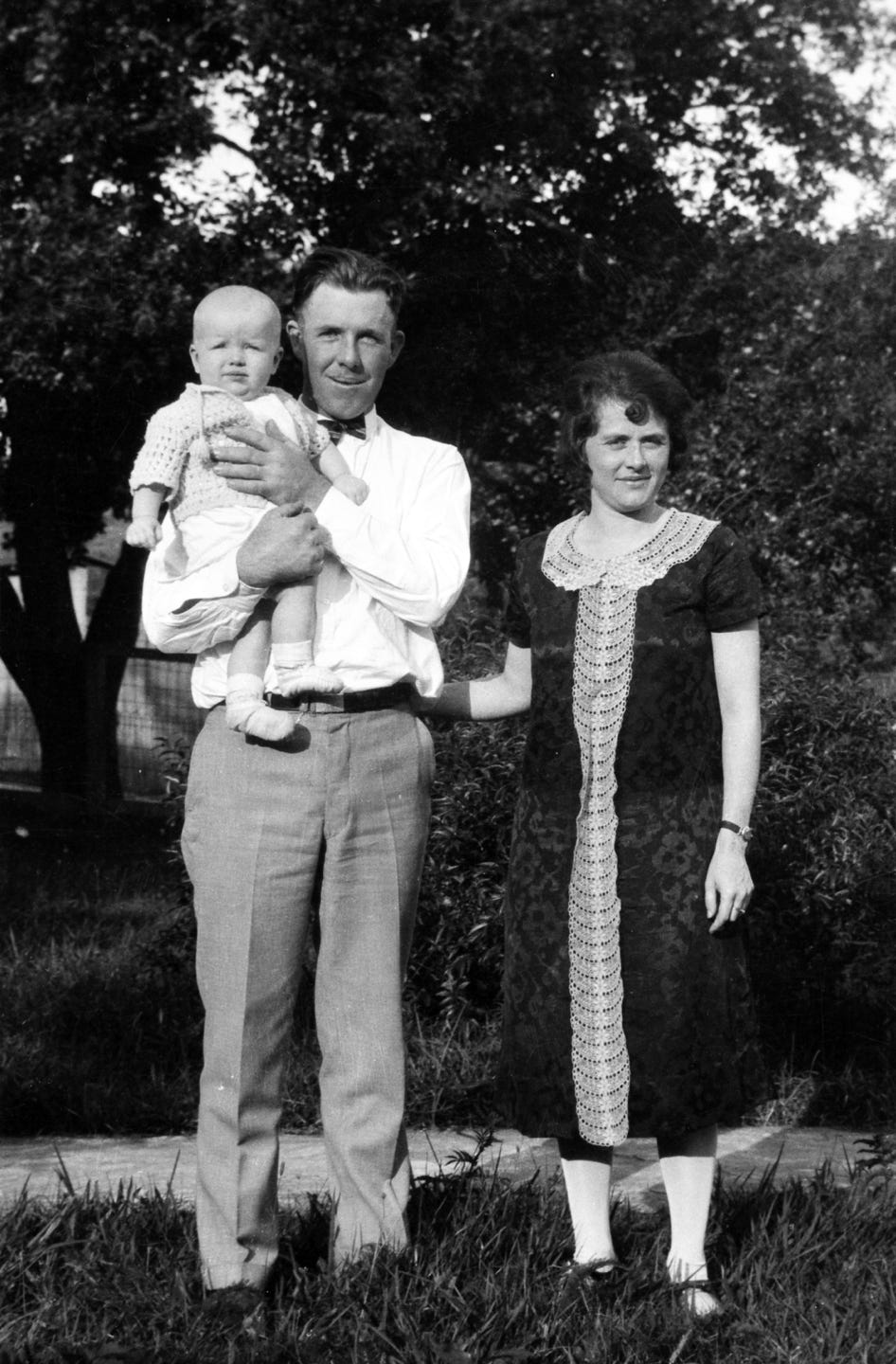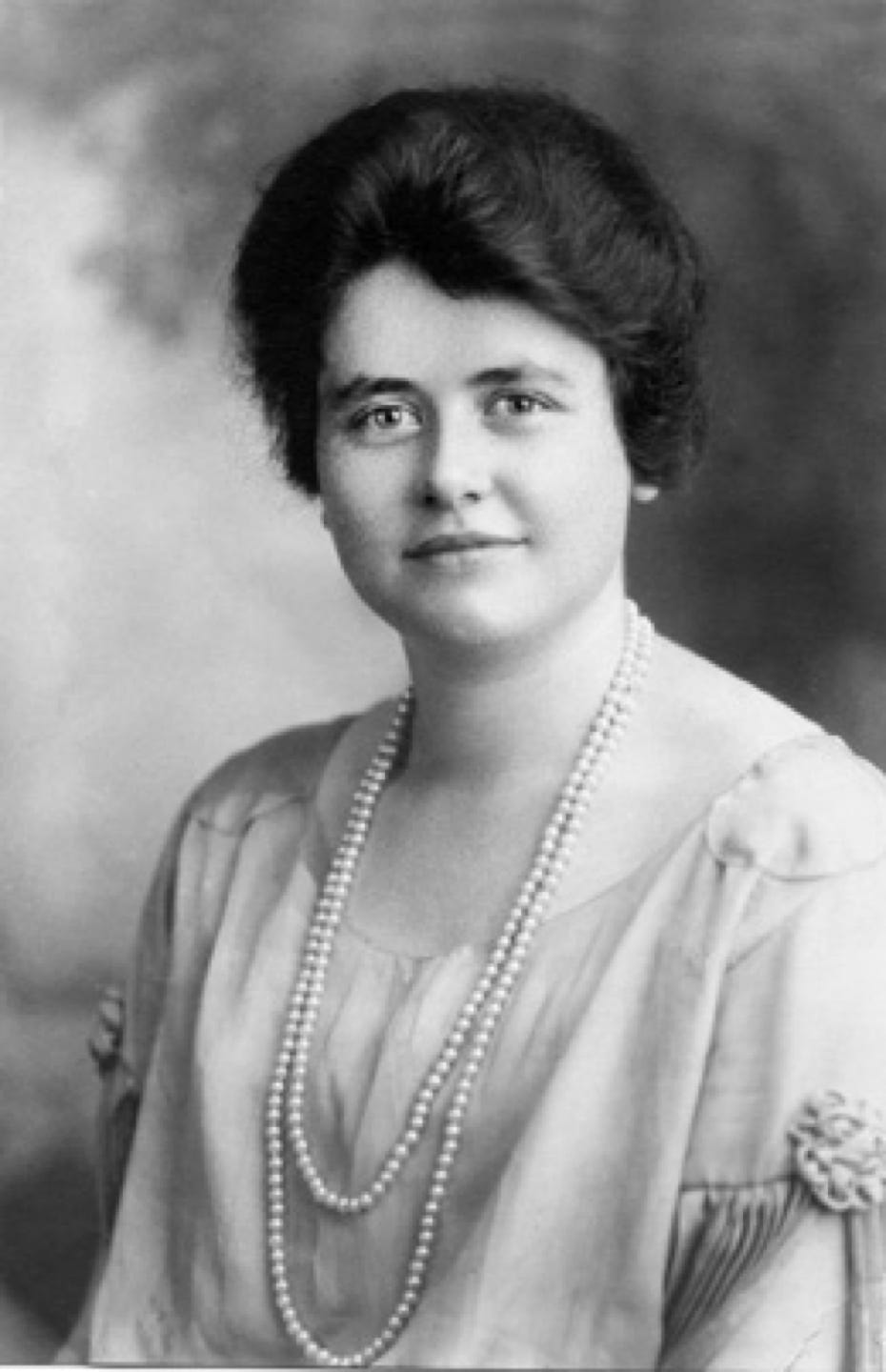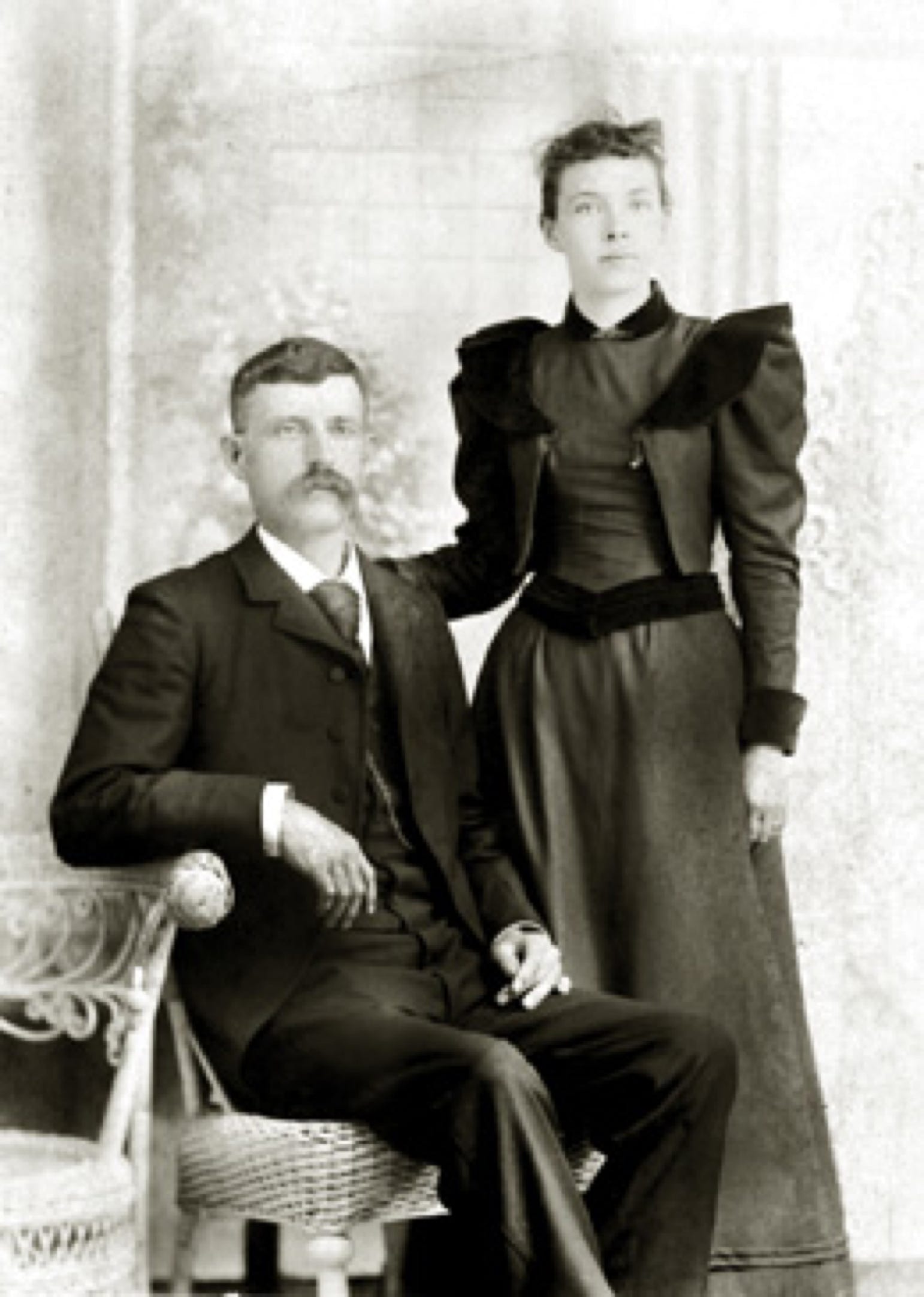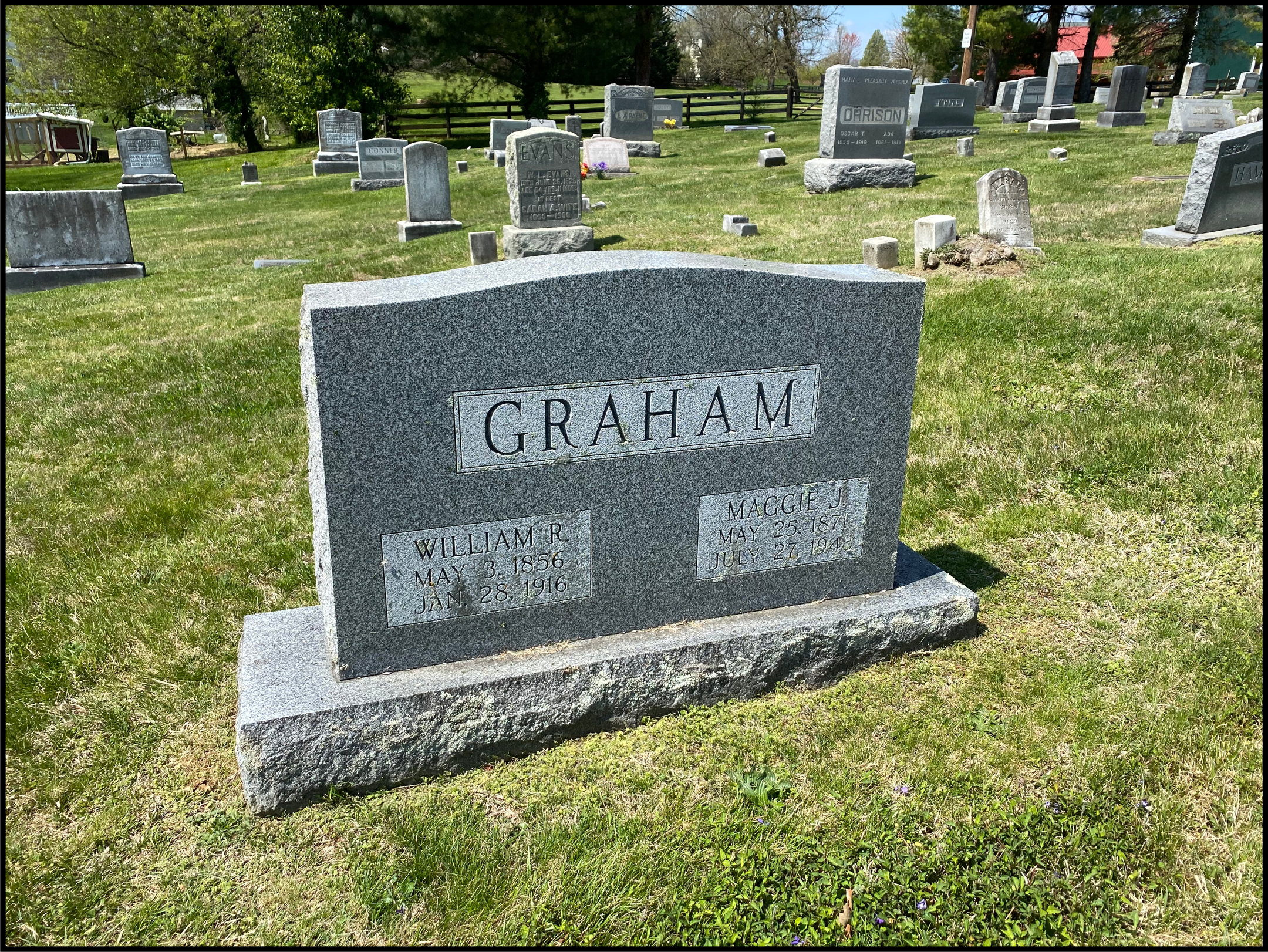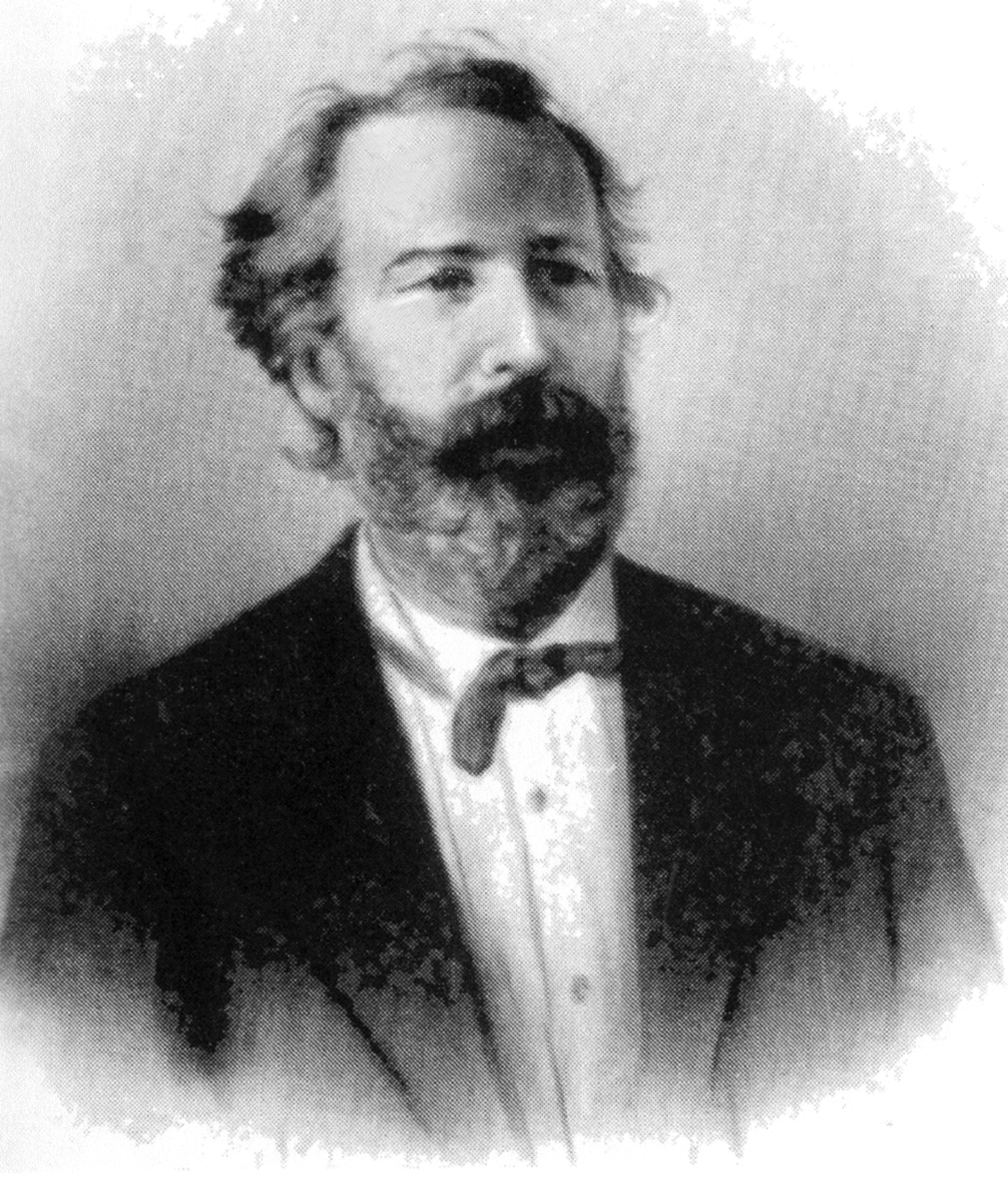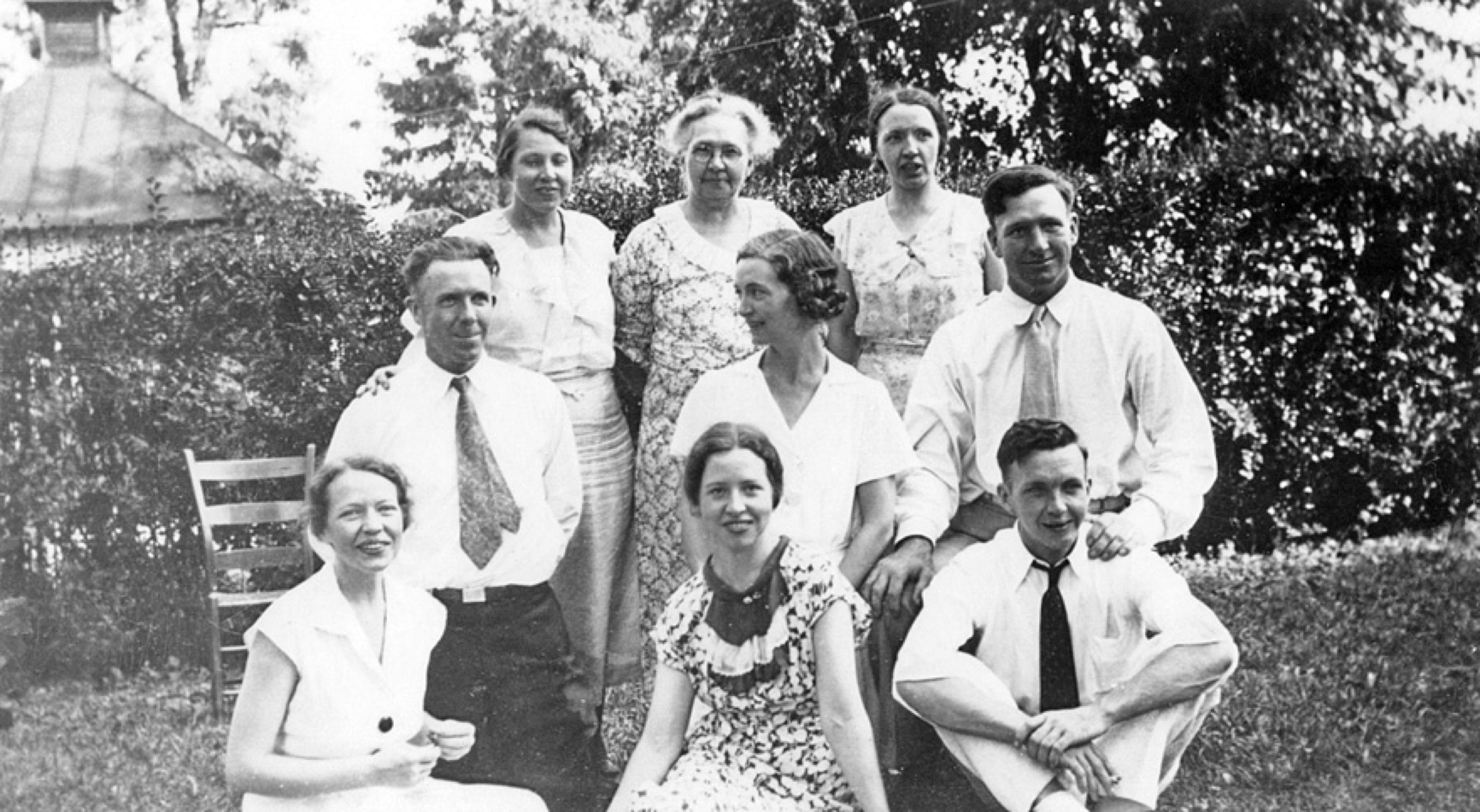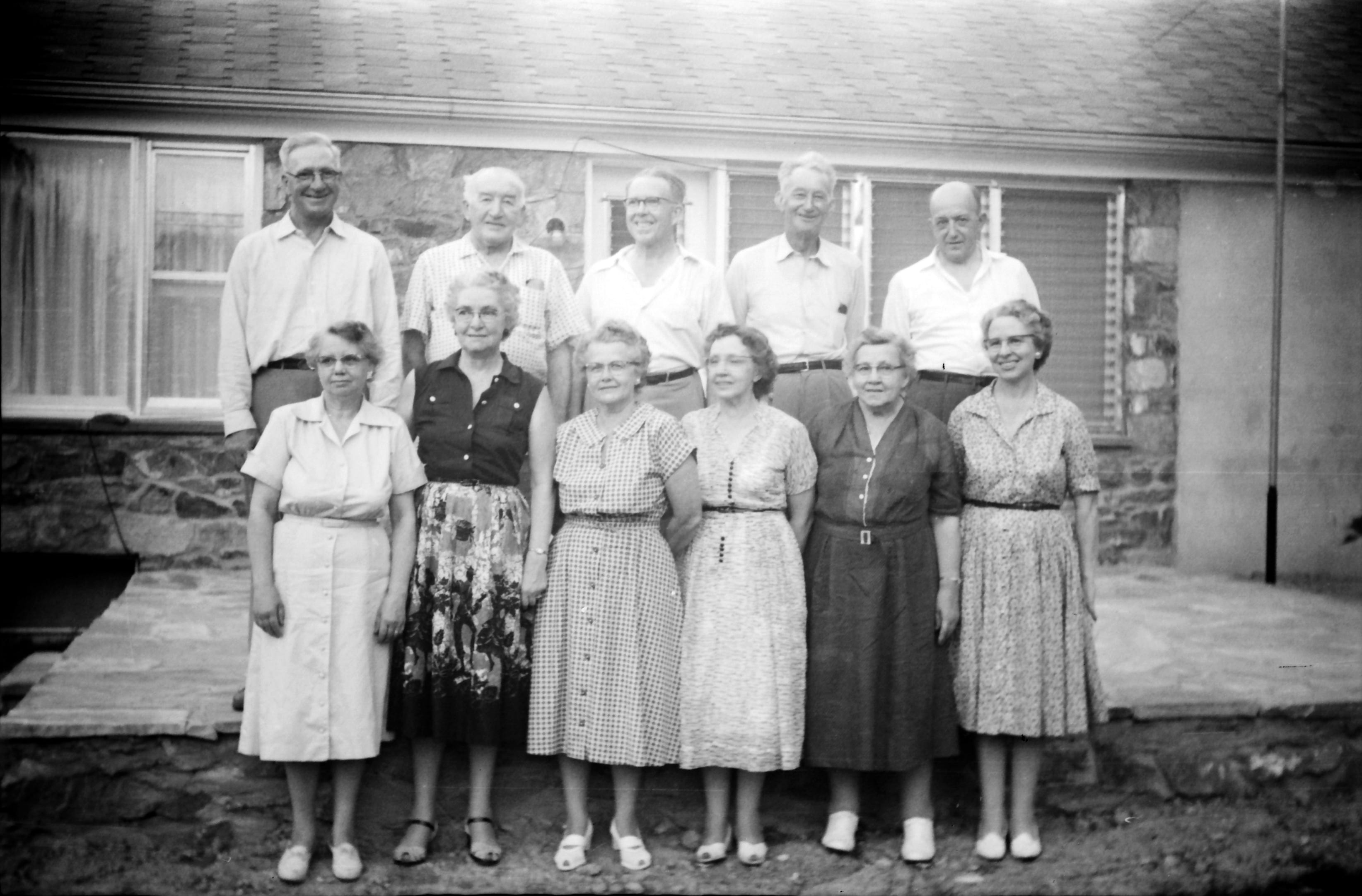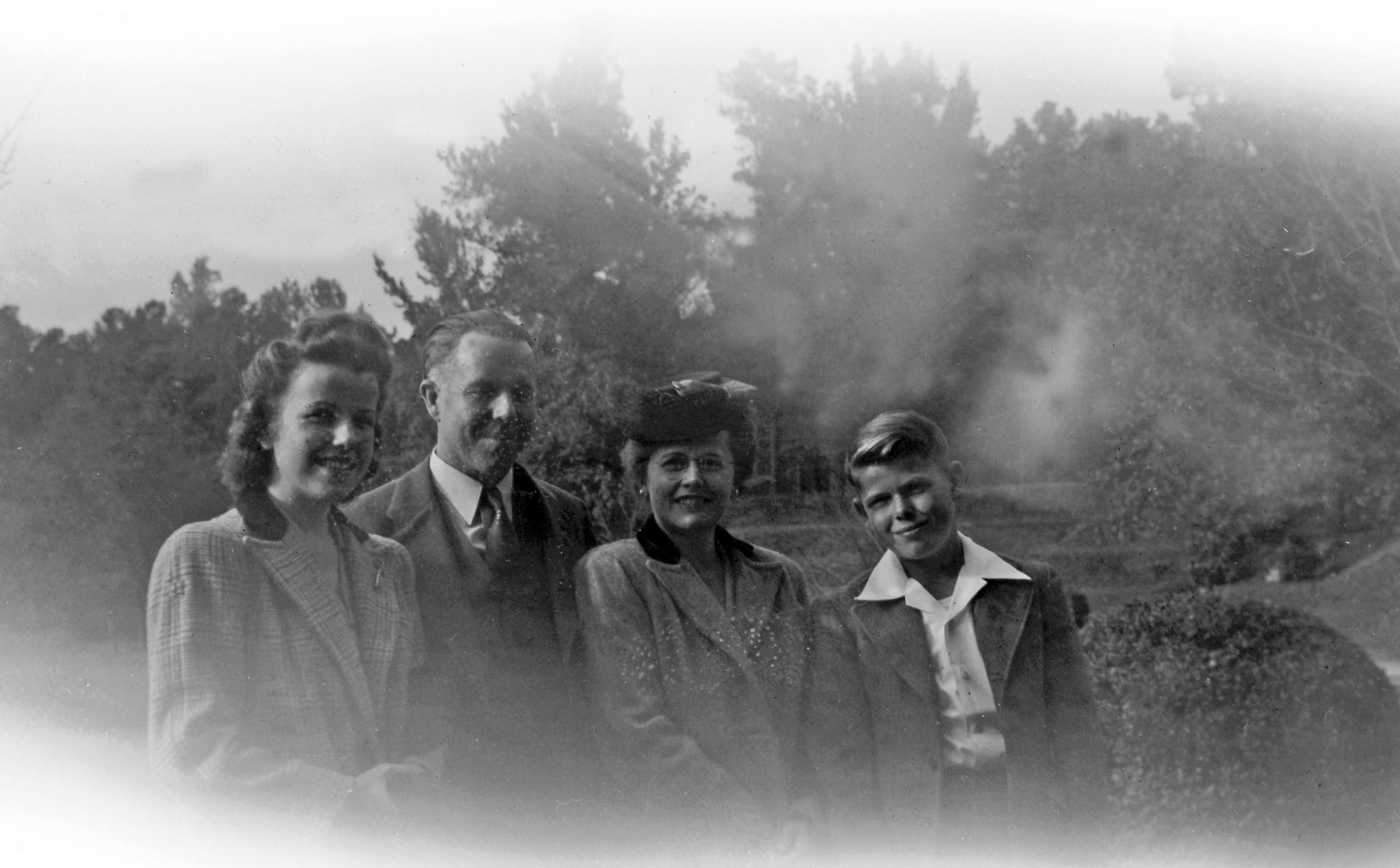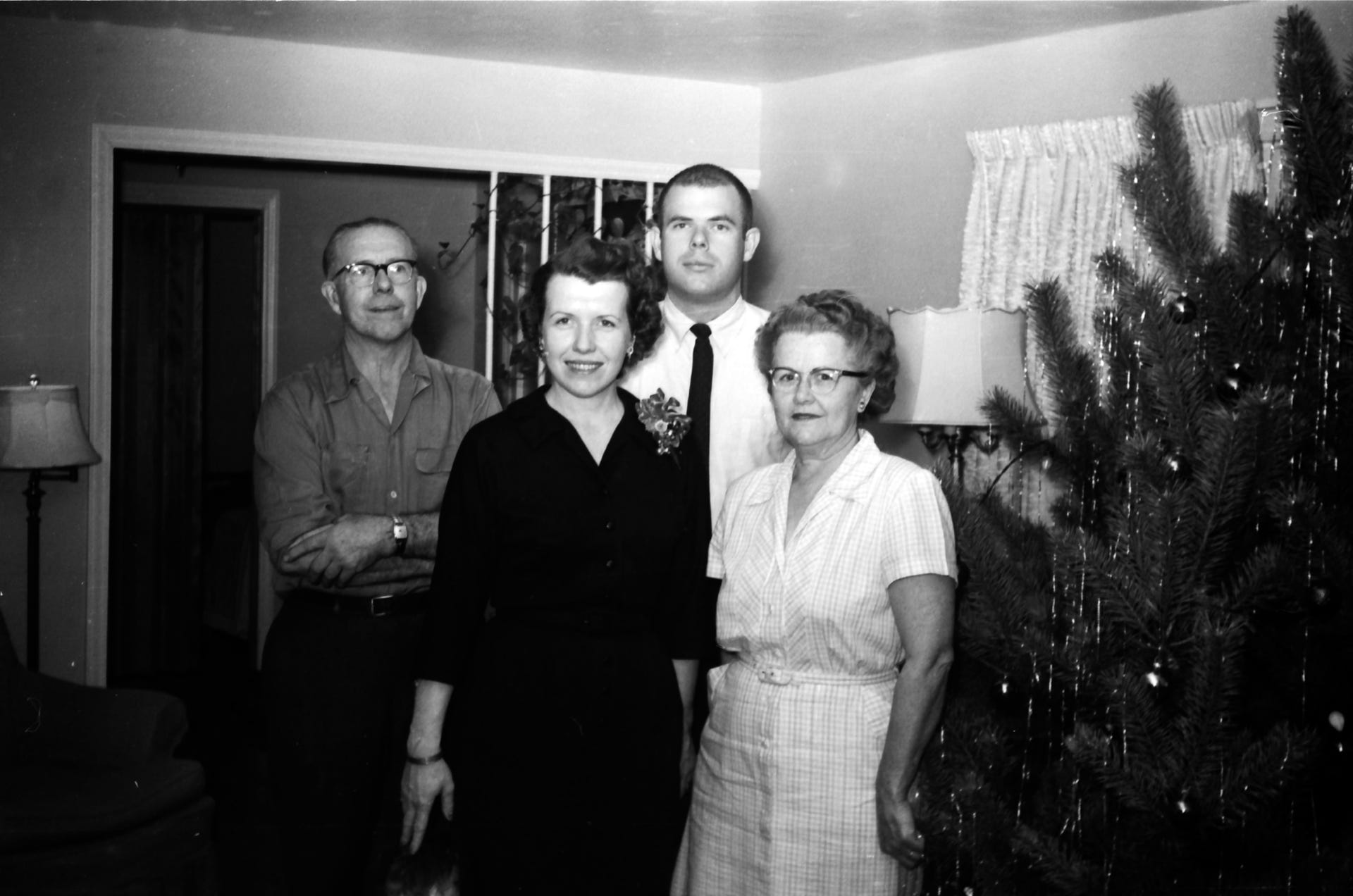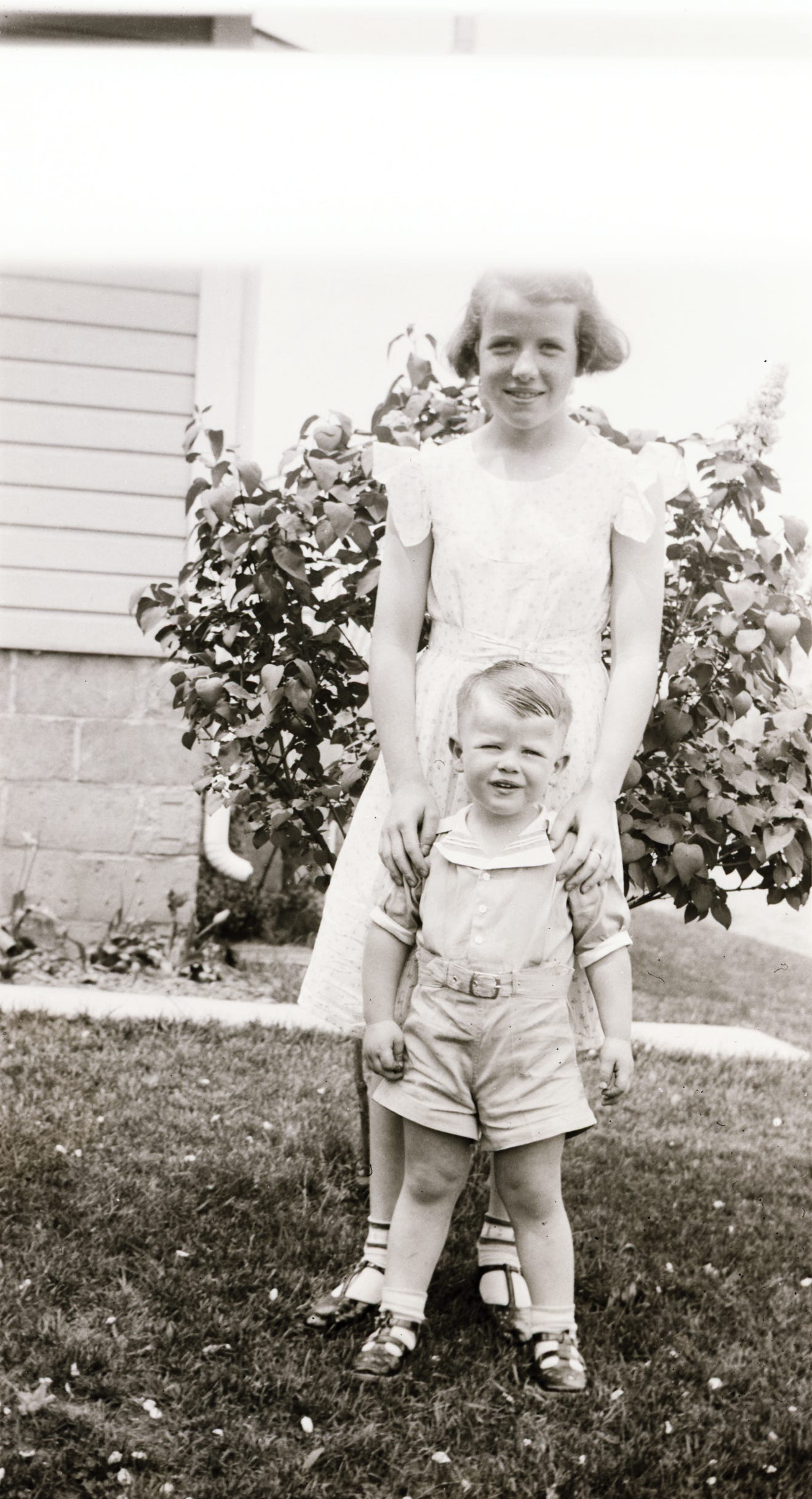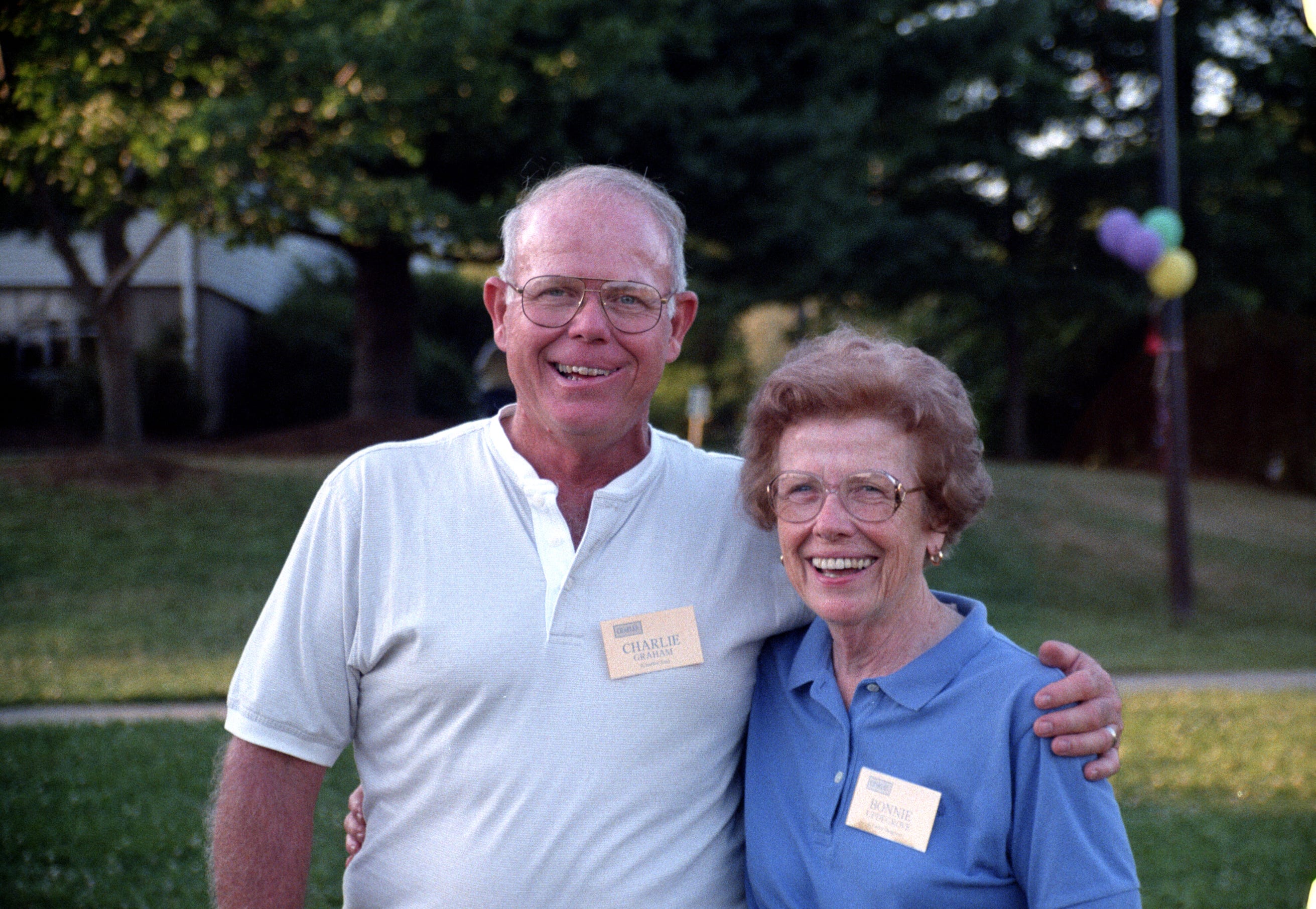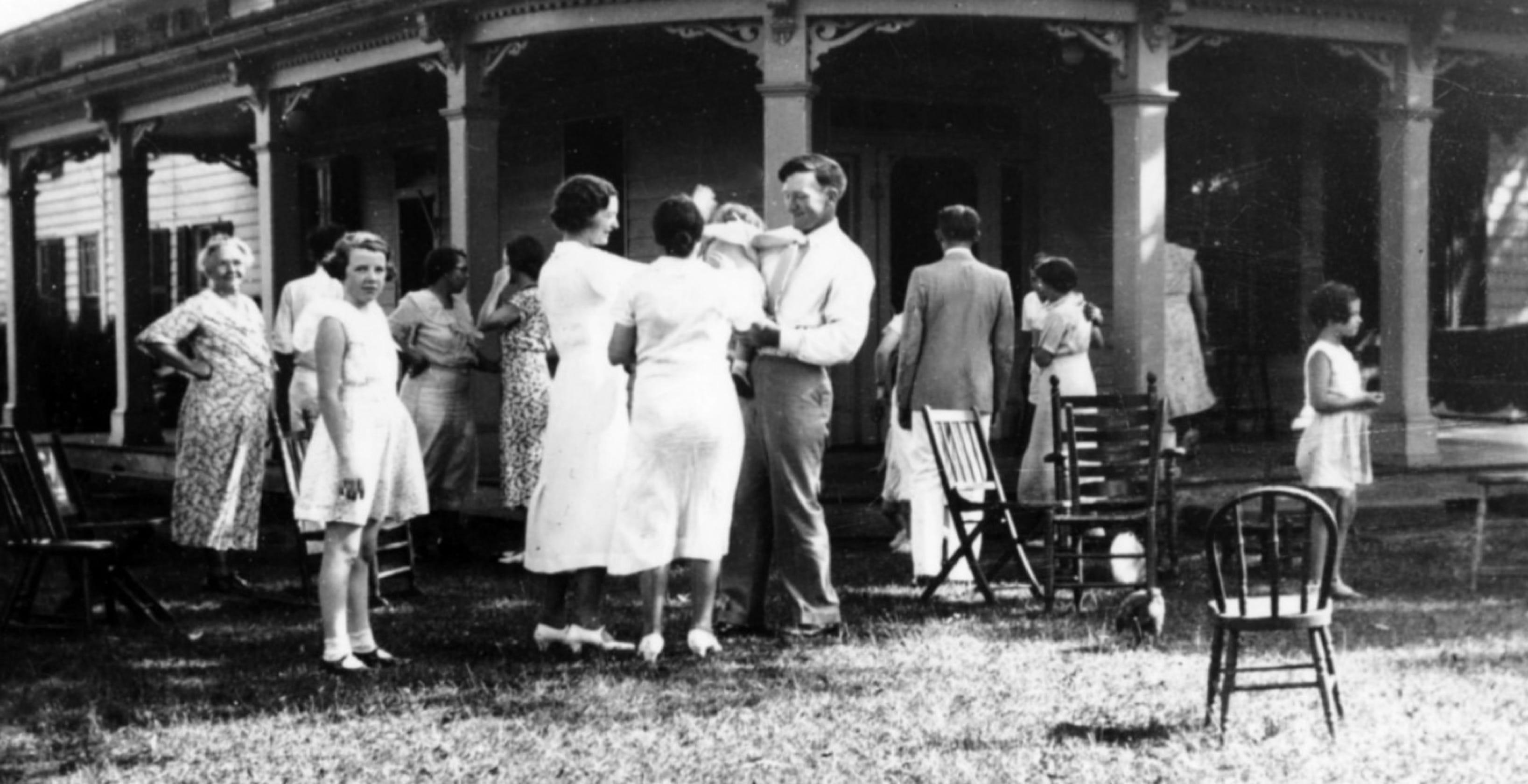“BEYOND THE BLUE RIDGE”
By W.M. Hickam
Four years after the death of his mother in 1924, 9 year old W.M. Hickam was adopted by Maggie Graham and her family in Hamilton, Virginia. In his memoir "Beyond The Blue Ridge" W.M. writes about growing up on the Graham Farm during the 1920's and 1930's, going to school in Hamilton and Lincoln, and working at the Loudoun Golf and Country Club. Below are a couple of short excerpts from the book as well as a link to 12 chapters from the book.
pp. 18-19: The Graham family came to Loudoun from southwest Virginia. Mrs. Graham (maiden name, Margaret Jane Corell) was born in Tazewell, Virginia May 28, 1871. I am not sure if she had any brothers, but she had one sister whom she used to visit every winter and with the help of her mother the three would make quilts. On Christmas of 1930, she laid out on the sofa and chairs eight quilts of different patterns she had made, as Christmas presents - one for each of her eight children. The quilts were numbered one to eight and she had a hat with numbers one to eight. Each child drew a number and the quilt of that number was the Christmas present for that child. Her fairness in doing things was a quality of life I have tried to imitate.
The children were allowed to exchange the quilts with each other if they wished another pattern or color. Later, when I went to college and even to Pittsburgh to work in 1942, I brought along one of Mother Graham’s quilts.
Margaret Jane Corell was the daughter of Mr. James Oscar Corell, a Civil War veteran, who was born in 1843 and lived to the ripe old age of 97. He was the only Civil War veteran, and the only Confederate soldier, I ever knew. He visited the farm in Hamilton to see his daughter twice during the early thirties. He truly was of the school that one so often sees in the pictures of Robert E. Lee. His only dress was the stiff white collar with black bow tie, the long black coat with split tail, and the black pants. He had white greying air and a beard to match it. Truly, he was a distinguished looking southern gentleman and always got the respect of all without demanding it. He must have been self-educated and well-read for he could extemporaneously talk about a subject in a fascinating manner.
He was a devout Christian; each morning after breakfast everyone would gather in the parlor for his reading of a selected Bible passage and prayer. No one questioned the gathering when he was there, although the hay may have awaited cutting, or the corn needed plowing, or the garden hoed, or the chicken killed, picked and cleaned for dinner. To me they were impressive and memorable gatherings. It was only when Grandaddy Corell was there that we had such family prayer sessions. His daughter, Mrs. Graham (and the older folks called her “Maggie”), carried the tradition in her private life by reading the Bible every night in bed and getting on her knees to pray beside the bed. Many times I tip-toed through her bedroom and found her saying her prayers.
William Robert Graham, her husband, who had died twelve years (1916) before I came to live with them, was born in Buchanan, Virginia on May 3, 1856. He was the youngest of one sister and two brothers. The brothers were some ten to twelve years older than he. At the start of the Civil War many families were split over the questions of rights and wrongs of slavery. The Graham family was torn apart by the war and never reunited. The two older boys ran off to the North to join the Union Army. Mr. Graham, their father, joined the Confederate Army, and William Robert Graham, being only ten years of age, stayed home to help his mother run the farm. The two older Graham brothers were never found after the war and what happened to them remains a mystery to the family. W.R. Graham spent many days and trips following leads in search of his two brothers; and he died in 1916 without ever finding out what happened to them.
pp. 27-28: When I came to the Graham Family in 1928 at the age of nine, Mrs. Graham was fifty-seven years old, and her husband had been dead for twelve years. At Mr. Graham’s death their eight children ranged in age from twenty-two to seven. Only the three youngest children were at home when I arrived. Ocie and Margaret were elementary teachers at Hamilton. Margaret had attended Harrisonburg State Teachers College (HSTC). Ocie went to Fredericksburg State Teachers College for her Bachelor’s Degree and the University of Virginia for her Master’s Degree. Wade was in (his) first year college at Virginia Polytechnic Institute (VPI). Wade was home only on holidays and during the summer when he got summers jobs off the farm. One summer he drove the ice truck and delivered ice made at the Purcellville Ice Plant in Purcellville and Hamilton and to the surrounding farms.
The other Graham children, except Sam, had married and set up their own homes. Charlie, who helped his mother run the farm immediately after graduating from high school at his father’s death in 1916, was the only one of the eight who had not attended college. Sam had completed his degree work at VPI, where he was tackle of the football team and was selected for the All-South Atlantic Team; he coached football at a high school in North Carolina before going on to Rollins College in Florida as the football coach.
Ollie had married John Monroe, a pharmacist at the Purcellville Pharmacy on the corner of the main street and across from the successful restaurants operated by three brothers from Greece. Ollie and John lived in a house in Purcellville on the opposite side of the street from the Catholic Church and about two houses down the street toward Hamilton. Ollie went to HSTC and one summer to the University of Virginia. At one time, Ollie, Ocie and Margaret made up the entire teaching staff at the three-room Hamilton Elementary School. The three were outstanding teachers, and I doubt if there was a ever a better staffed school. Ollie and John had only one child, a son named Douglas. He was the oldest of the Graham grandchildren and six years old. Being close to my age, he and I often played together. Flying was in his blood at an early age, and he learned to fly a plane before learning to drive a car.
Charlie had married Kathleen Arnold, the sister of my first and second grade teacher at Waterford (Minnie Belle Arnold Trussell). When he married, Charlie left the farm and opened an auto body repair and paint shop in Baltimore and later in Purcellville. It was the only shop of this type around, and Charlie made it a successful lifetime business. They lived in Hamilton on the main street between Schooley’s Hardware and Laycock’s Grocery but on the south side of the street. They had one daughter, Bonnie, who was five years younger than I. They later had a boy, Charles Mac, who grew up to become a medical doctor in Radford, Virginia.
Anne married A. Lee VanDeventer and lived at Valley View Farm adjoining the Graham Farm. They had taken Ben (WM’s brother) in 1928 to live with them. Jean, their only child, was only two years old when I came to the Grahams. Anne had a teacher’s certificate from summer school attendance at HSTC.
Mary, the oldest Graham girl, married Joe Spring and lived on a dairy farm two miles southeast of Leesburg. Mary had attended HSTC and late taught school for many years at Lovettsville Elementary School. In stature and disposition and speech, Mary was much like Mrs. Graham. They had two children - Graham, who was the second oldest grandchild, and Margaret, who the fifth oldest.
The Springs had the only home-produced, direct-current electrical system I can remember seeing. A gasoline engine turned a generator to charge the batteries and the batteries supplied electricity for lighting the house. It was all manually operated and when the lights got dim, Joe would go down and start the engine to the generator.


